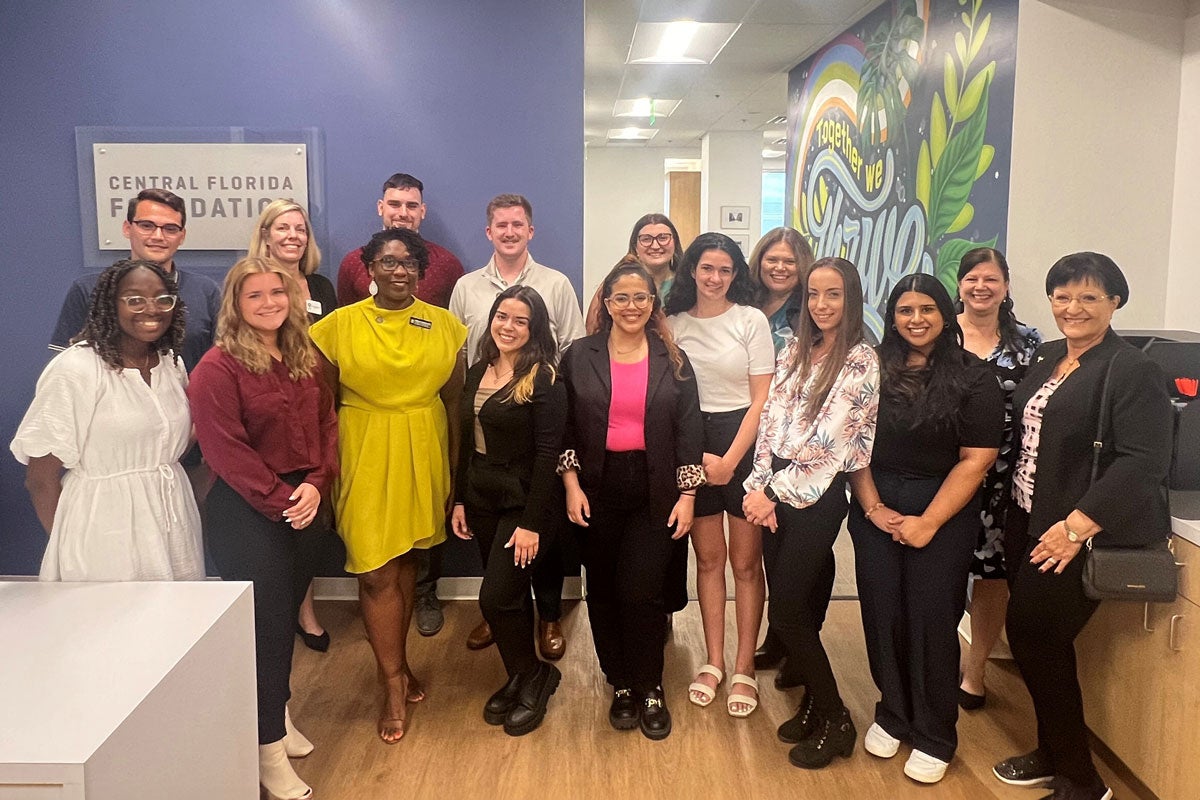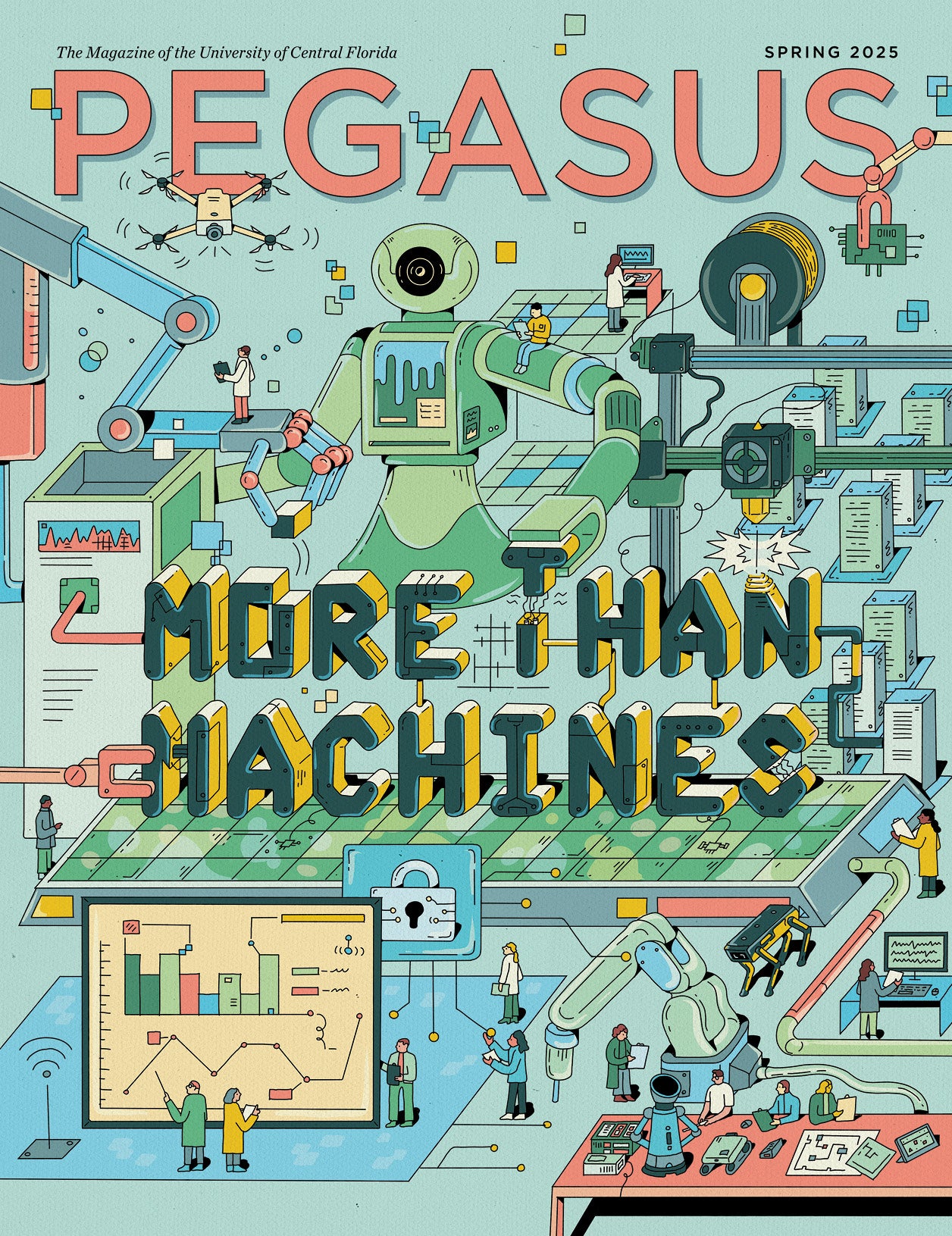If you had $100,000 to give to local charities, where would you donate the funds? For a group of UCF students, this question became a reality.
In Spring 2024, 12 students in the undergraduate nonprofit management program housed at UCF Downtown influenced the distribution of $115,000 to philanthropic organizations around Central Florida. This was the main objective of Nonprofit Leadership Seminar, the program’s capstone course.
Stephanie Krick, senior lecturer of public administration in the College of Community Innovation and Education, says the course teaches students how community foundations distribute donors’ money in responsible and meaningful ways.
“It’s a strategic philanthropy project where students learn the importance of investing in sustainable and reliable organizations,” Krick says. “This course is often the first opportunity students have to look at philanthropy from a donor’s perspective.”
To accomplish their goal, Krick’s students conducted grant research on behalf of the Central Florida Foundation. Established in 1994, the foundation drives social change through strategic investments and collaborative partnerships. Sandi Vidal, the foundation’s vice president of community strategies and initiatives, says its mission is to build community by building philanthropy.
“We focus on working with charitable investors to make a difference,” Vidal says. “We think about various problems in the community and how to apply capital to help solve them.”
Working closely with mentors, the students utilized community portfolios intended to fund various causes, such as animal welfare, senior care, Jewish services, support for medical conditions such as Alzheimer’s or lung diseases, and homeless services. After researching nonprofits related to these causes, the students chose three or four from each category.
Victor Suarez says his group took a top-down approach to choosing the most appropriate nonprofits.
“We looked at all local organizations in the portfolio and reached out to the ones that were aligned with the foundation’s goals of sustainability and long-term solutions,” Suarez says. “We contacted them and discussed their needs. If we felt they fit the essential specifications, we visited them and asked more questions.”
The students toured the select organizations and learned about projects in need of funding. Using this information, the students then identified which organizations aligned best with donor interests and presented their findings to the Central Florida Foundation board of directors.
“The students didn’t make the final decision, but they shared their research, answered questions and explained why they believed these were great organizations and projects for the foundation to invest in,” Krick says. “However, the board voted on the students’ recommendations and ultimately approved them all.”
Based on these recommendations, the Central Florida Foundation granted a total of $35,000 from the Jewish services and services to the poor portfolios. That included $9,000 to The Sharing Center for case management certifications, $7,500 to the Orlando Torah Academy for its ESL curriculum and supplies, and $18,500 to the Jewish Family Services of Greater Orlando for its Pearlman Food Pantry project.
The foundation also allocated a total of $35,000 from the animal welfare portfolio to three related nonprofits. Little Ray Children’s Books received $5,000 for new computers, Pet Alliance of Greater Orlando received $10,000 for an animal transportation vehicle, and the Central Florida Zoo received $20,000 for its peccary habitat.
Additionally, the foundation distributed $35,000 from the seniors portfolio to caregiver center Share the Care for its behavioral health services.
Suarez says the project helped him understand the importance of examining nonprofits and showed him the many ways they can be organized.
“A lot of the bigger nonprofits knew exactly what they needed to move forward while other nonprofits were unsure of their needs,” Suarez says. “I think it’s important for nonprofits to analyze themselves to understand what they need to be successful.”
Looking ahead, Krick hopes to create more collaborative opportunities for her students by utilizing the downtown campus’ proximity to numerous community partners and nonprofit organizations.
“We’re seeking to develop partnerships that are beneficial to students, organizations and communities,” she says. “That’s what I’m looking for — any opportunity to have my students out in the field and learning from the people who are doing the work.”





